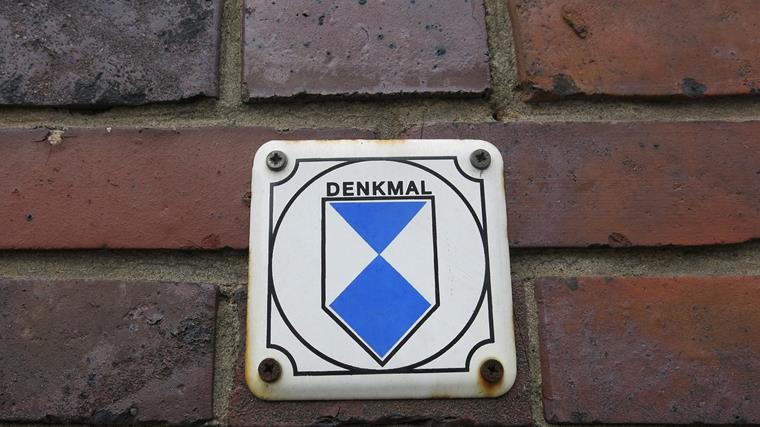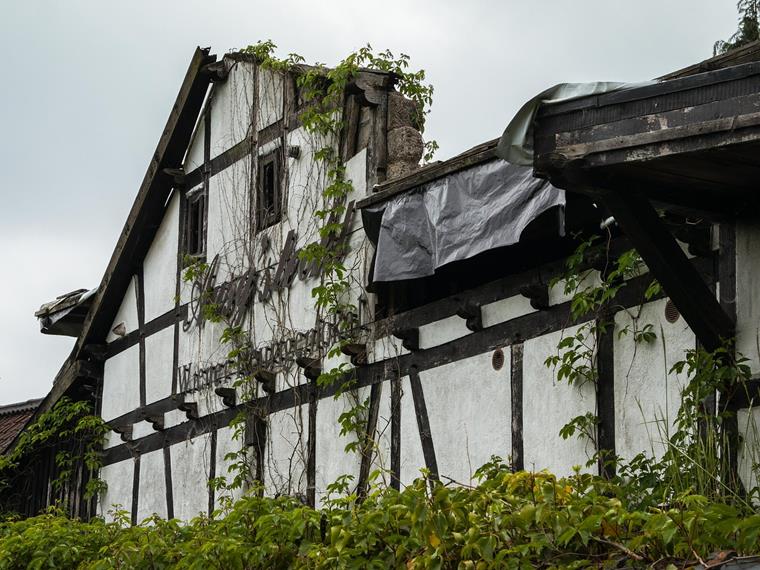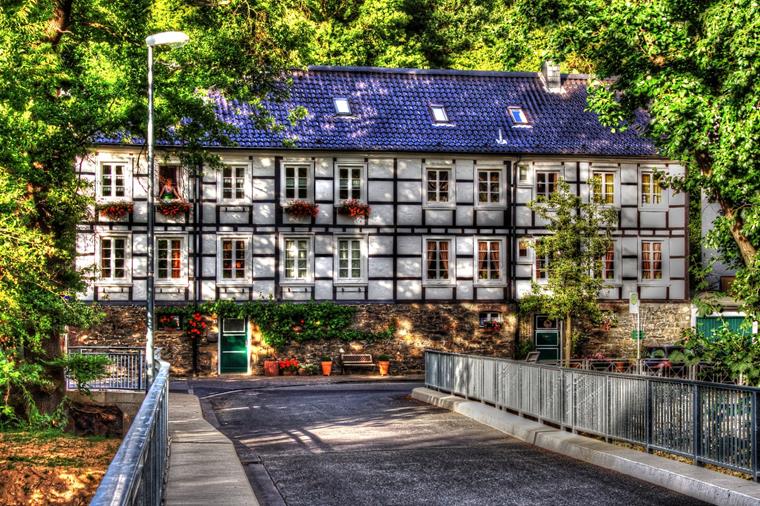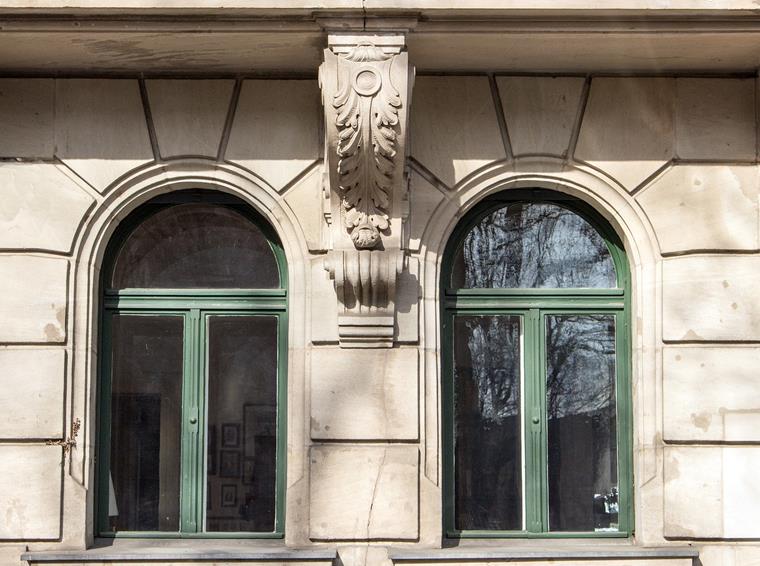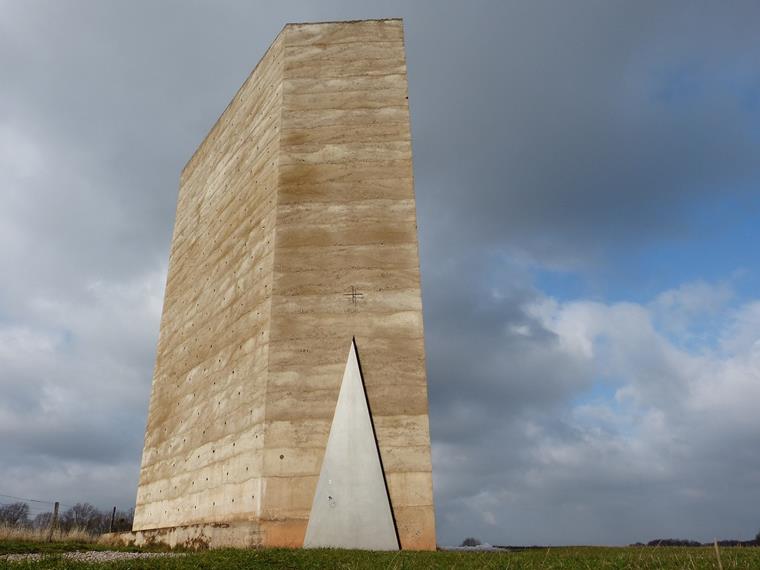For Love of History
Annette is an architect and conservationist. Before studying architecture, she completed an apprenticeship as an artificial glazier, so she knows the technical and theoretical sides of construction. Together with her husband, she likes to build her own half-timbered house every now and then. Because she especially enjoys working on and with old buildings. Her main focus is on working with sustainable building materials, such as clay and timber.
Today, she heads the Department for Heritage Promotion at the German Foundation for Monument Protection (Deutsche Stiftung Denkmalschutz) – an independent, private, and non-profit foundation.
What are the tasks of cultural heritage management?
Annette describes cultural heritage management as a task for society as a whole, to keep our building culture alive. Listed buildings are structures with character and a story of their own. They show us how people built and lived in the past, making the past more tangible for us.
What is also important: Not every old building can become a monument. Only three to four percent of the building stock in Germany is listed. A candidate must have a certain unique selling point: Last of its kind, prototype, particularly typical of a trend, or a classic construction method of a certain region. In some cases, CHM experts create complex reports based on various criteria.
Not only buildings can be listed. Ships or aircraft also meet the requirements. Therefore, a building can be listed if it meets the following criteria:
- Interesting in terms of urban planning
- Historically, art-historically, or architecturally relevant
- Special repository of knowledge or values
- Historical building techniques
- Historical building materials
The German Foundation for Monument Protection uses donation funds to support people who have purchased a monument in order to repair it. Public monuments are also repaired or preserved using such funds. Furthermore, the foundation organizes school projects and similar measures to raise awareness of historical monuments.
Eyesore Monument Ruin by Roadside
Cultural heritage management does not always have the best reputation in Germany. Some old buildings have been standing empty by a roadside for decades and are gradually falling into disrepair. They look unattractive, and the construction site could also be used in other ways. Cultural heritage management often has a hand in this and takes a protective role when the issue of demolition arises.
Annette explains to us that buildings are not listed as cultural heritage for no reason. Even if it may look that way to the layperson from across the street. Neglected buildings often do not, or no longer, show their monument value to the outside world. Sometimes, a valuable wall from the Middle Ages is hidden under old tile facades, and there are still high ornate ceilings or old wall paintings.
She goes on to say that many owners of such monuments unfortunately deliberately let them fall into disrepair. An essential rule in cultural heritage management is the cost efficiency of a repair. If a building has deteriorated to such an extent that it would no longer be efficient to renovate it, even with the support of donations, the heritage conservation will be canceled. The owners hope for this and then have the structures demolished as soon as possible in order to plan a new building there.
Cultural heritage management has a particularly bad reputation in historic city centers. Instead of a two- or three-story monument, some investors would prefer to see a modern five- or six-story building at the same location: More space means more returns. But is it worth it in the end if we lose valuable cultural heritage as a result?
Sustainable Renovation Under Monument Protection
Old buildings and existing buildings should be renovated and continue to be used, especially with regard to sustainability. Demolition and new construction are not only time-consuming and resource-intensive, they also consume vast amounts of energy. This is absolutely unsustainable. Annette points out here that the construction industry is one of Germany's largest producers of waste, since it is rare for anything to be truly reused, especially when it comes to historical building materials.
- "When you see that over 50 percent of the waste in Germany comes from the construction industry, that gives you food for thought."
The cultural heritage management concept is to think about how to preserve a building first of all, which naturally makes a lot more sense than simply tearing it down. There are many ways and means of preserving or reusing the structural components. In terms of sustainability in particular, it is always worth considering what can still be used from an existing building – whether it is a monument or not.
When renovating listed buildings, the preservation of aesthetics is very important to Annette. If you install undivided windows made of plastic or aluminum instead of split lattice windows in an old half-timbered house, it will lose a lot of its visual appeal. Such windows just don't match the rest of the facade. Here, you should find a good balance between modernization and conservation of value. For each building, the Office Monument Protection therefore decides individually what changes may and should be made so that the historic structure, the very thing that makes this building a cultural monument, is preserved.
Modernizing and renovating a listed building costs money, no question about it. Since experts are now unfortunately rare when it comes to these historical building materials, such a project is very expensive, of course. In order to make it easier for people who still want to take this step, the Foundation for Monument Protection is involved.
Future of Cultural Heritage Management
Many architectural styles listed are a kind of fad. What we would most like to tear down today, we may appreciate again in ten years. Historicism, for example, was very unpopular in the 1960s. Here, architectural styles of the past were used and entire quarters with stucco facades and other references to the architectural past were created. Nowadays, people really like to live in such buildings. So it's lucky that they weren't demolished at the time.
We ask Annette whether she assumes that the preservation of existing buildings –– especially monuments – is trend-setting, so that we can fulfill our responsibility to sustainability in the future. She fully agrees.
- „This is certainly still a task for the future: building redevelopment, that is, the existing and further development of the existing buildings.“
She would really like our society to take cultural heritage management as an example. Especially when it comes to the circular economy. There should be thorough consideration of whether an existing building really needs to be demolished. It is also necessary to take climate protection more seriously in the construction industry – an important statement.
Annette, what is your favorite building?
As with all of our guests, we also ask Annette what her favorite building is. Among other things, she mentions the Kolumba Diocesan Museum in Cologne, Germany, built on the ruins of the Gothic Church of St. Kolumba, which was destroyed in the Second World War. Here, she sees a wonderful use and expansion of the historical remainder.
She also talks about the Bruder Klaus Field Chapel. A great combination of landscape and architecture – we can only agree with her. Thank you for visiting us!
